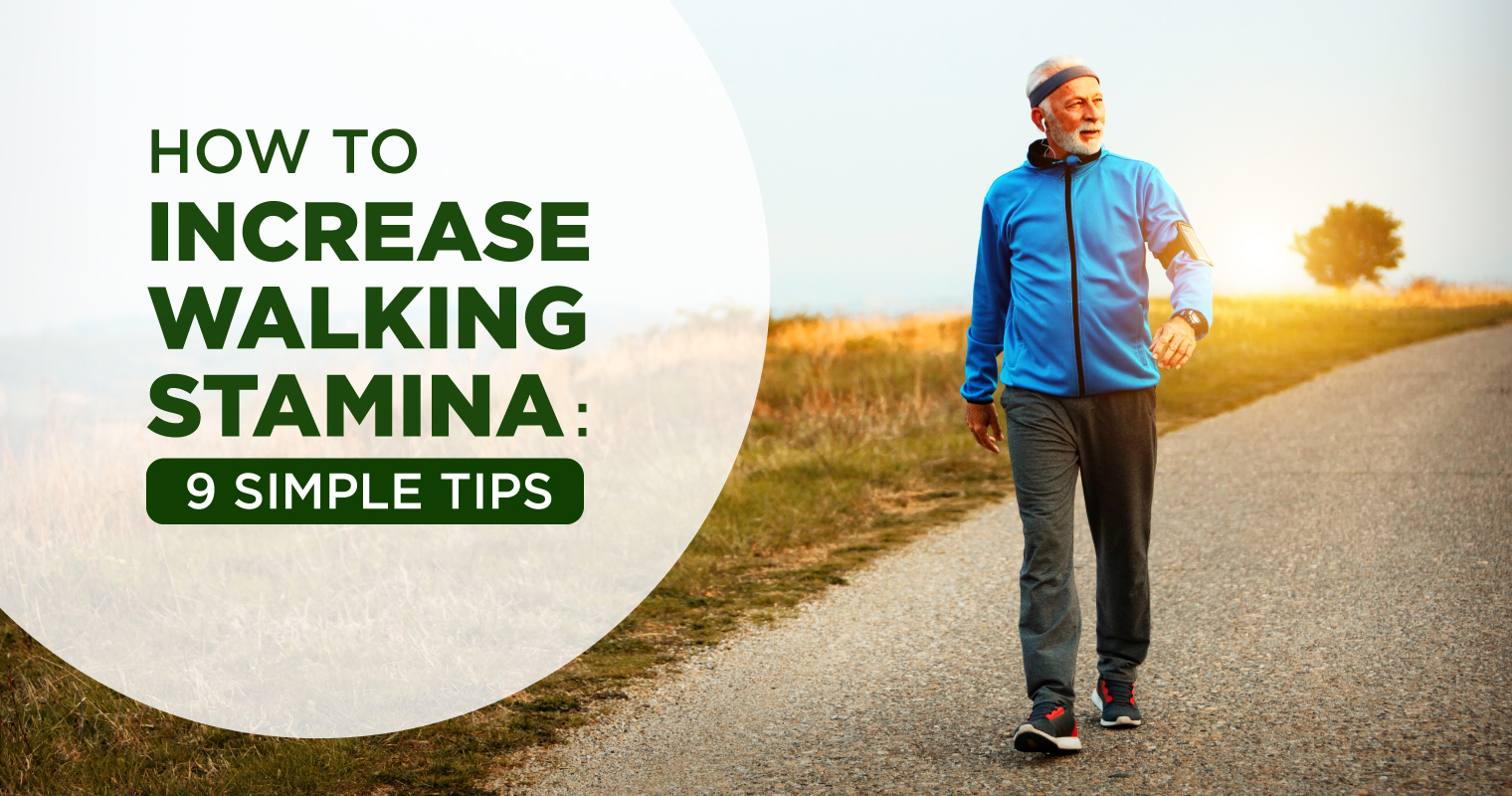Walking is a fantastic way to improve your fitness level, and it’s accessible to nearly everyone. It’s free, uncomplicated, and can easily fit into your daily routine. However, if you’re just starting or have been relatively inactive, you might find yourself tiring quickly or becoming short of breath.
The good news is that you can increase your walking stamina over time. In this blog, we’ll explore some simple yet effective strategies to help you build endurance and make walking a more enjoyable and sustainable activity.
1. Regularity is Key
Walking for at least 30 minutes, three to five days a week, is a great starting point. This consistency gradually enhances your cardiovascular fitness.
Don’t worry if you can’t initially manage this duration; your body will adapt with time. If outdoor conditions aren’t favorable, consider using a treadmill or stationary bike indoors.
2. Warm Up and Stretch
Always begin your walking sessions with a warm-up. Start with static stretches, focusing on one muscle group at a time. Then, transition to dynamic stretches, such as high-knees and jumping jacks, to gradually elevate your heart rate.
This preparation helps prevent injuries and improves overall stamina.
3. Plan Longer Walks
Incorporate longer walks into your routine at least once a week. Initially, these walks may cover relatively short distances. For instance, you might start with a 2-mile walk without feeling fatigued. Each week, add an additional 0.5 miles to your long walk. [1]
It’s essential to focus on gradual improvement rather than where you begin.
4. Maintain a Brisk Pace
A brisk walking pace of around 3 miles per hour is ideal. It’s faster than a casual stroll but not overly strenuous. To help maintain your pace, consider using a step app or listening to music.
There are various smartphone apps for running and music that can create playlists with the right beats per minute to keep you on track.
5. Change Terrain
Varying the terrain and elevation can make your walks more challenging. Walking on grass or sand requires more effort than on a paved trail. Incorporating hills into your route helps build stamina and leg strength.
When going uphill, lean forward slightly to reduce strain on your leg muscles. When descending, slow your pace and take shorter steps to protect your knees.
6. Add Resistance
If you’re short on time, you can increase the intensity of your walk by carrying some weight. You can purchase ankle and wrist weights or use a backpack filled with books or other solid objects. Keep track of the weight you carry and gradually increase it. After a few weeks, try walking without the added weight to see how much farther you can go.
7. Integrate Walking into Your Routine
Look for opportunities to incorporate more walking into your daily life. Choose the stairs over the elevator, park farther away from shops, or walk or bike to work if feasible. Even pacing around while on the phone or doing stretches while watching TV can help build stamina over time.
8. Utilize Fitness Apps
Consider using fitness apps that allow you to set and track your walking goals, helping you stay active and gradually increase your stamina. Some apps even enable you to compete with others for added motivation.
Many smartphones come with built-in activity trackers, and dedicated devices like FitBit can provide more detailed workout data.
9. 10-Minute Rule
To boost your stamina effectively, aim for at least 10 minutes of continuous physical activity at a time. Shorter bursts of activity can still be beneficial, but longer periods of activity have greater benefits.
For example, you can go on a 10-minute walk after each meal, spreading your activity throughout the day.
Conclusion
Walking is a fantastic way to enhance your stamina and overall fitness. Whether you’re a beginner or looking to improve your walking endurance, the key is consistency and gradual progression. With patience and dedication, you’ll soon find yourself walking longer distances with ease and reaping the many health benefits that come with increased walking stamina.
So, put on your walking shoes, take that first step, and start your journey towards improved fitness and endurance today. Happy walking!
References

